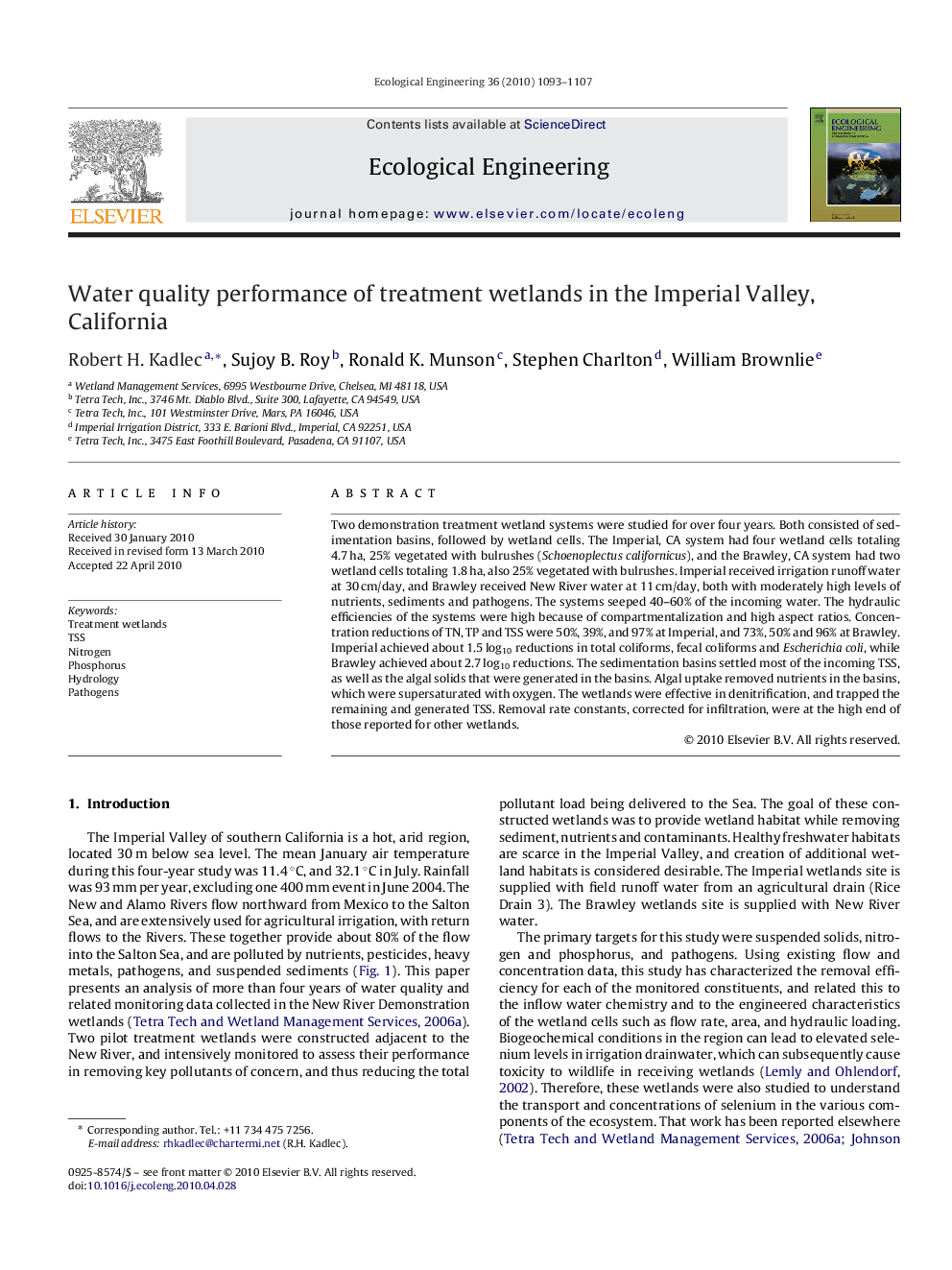| Article ID | Journal | Published Year | Pages | File Type |
|---|---|---|---|---|
| 4390367 | Ecological Engineering | 2010 | 15 Pages |
Two demonstration treatment wetland systems were studied for over four years. Both consisted of sedimentation basins, followed by wetland cells. The Imperial, CA system had four wetland cells totaling 4.7 ha, 25% vegetated with bulrushes (Schoenoplectus californicus), and the Brawley, CA system had two wetland cells totaling 1.8 ha, also 25% vegetated with bulrushes. Imperial received irrigation runoff water at 30 cm/day, and Brawley received New River water at 11 cm/day, both with moderately high levels of nutrients, sediments and pathogens. The systems seeped 40–60% of the incoming water. The hydraulic efficiencies of the systems were high because of compartmentalization and high aspect ratios. Concentration reductions of TN, TP and TSS were 50%, 39%, and 97% at Imperial, and 73%, 50% and 96% at Brawley. Imperial achieved about 1.5 log10 reductions in total coliforms, fecal coliforms and Escherichia coli, while Brawley achieved about 2.7 log10 reductions. The sedimentation basins settled most of the incoming TSS, as well as the algal solids that were generated in the basins. Algal uptake removed nutrients in the basins, which were supersaturated with oxygen. The wetlands were effective in denitrification, and trapped the remaining and generated TSS. Removal rate constants, corrected for infiltration, were at the high end of those reported for other wetlands.
